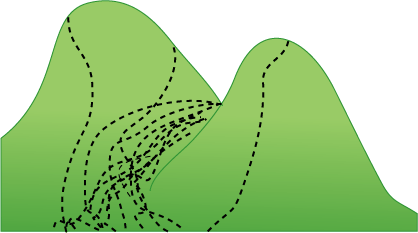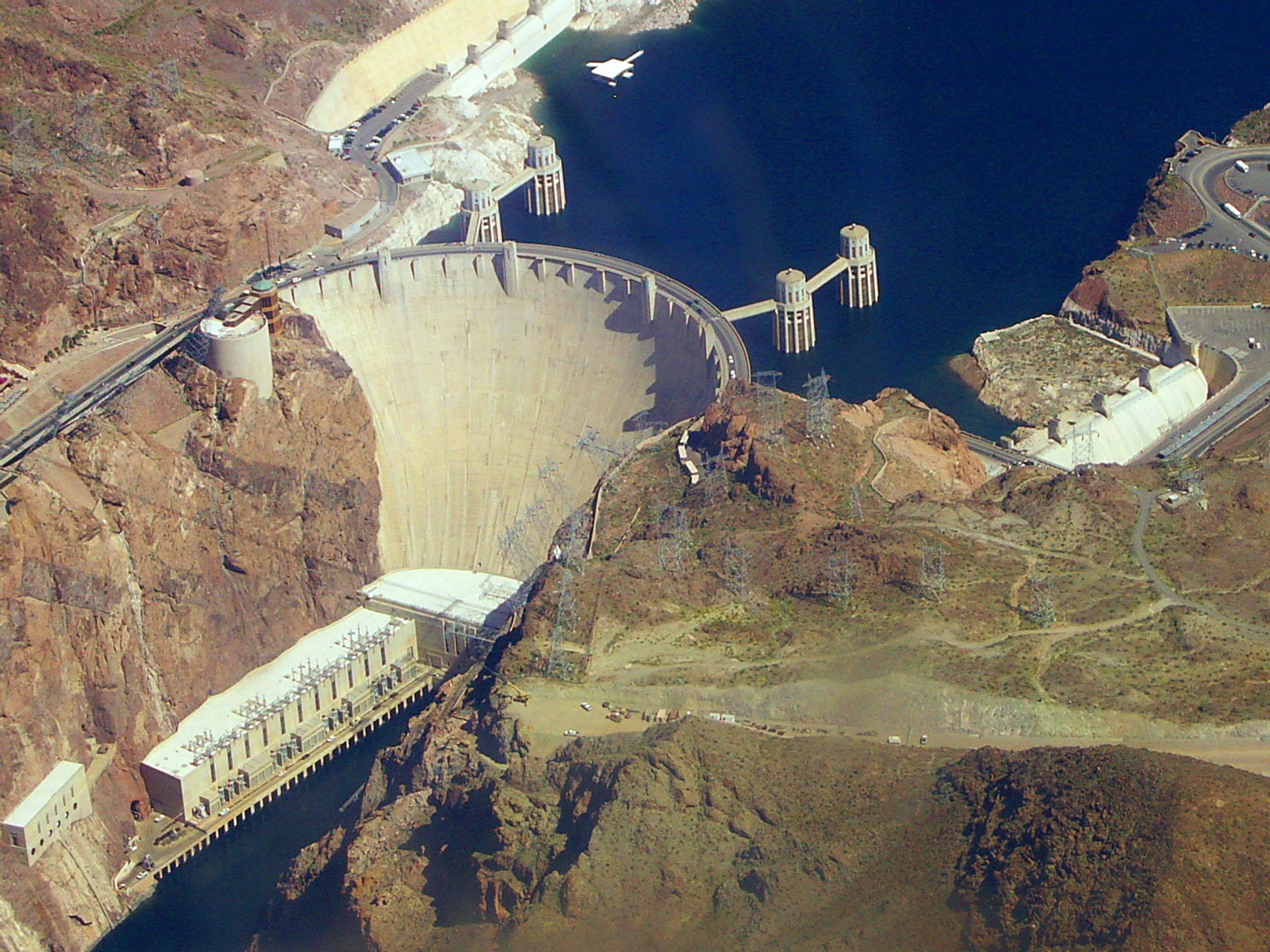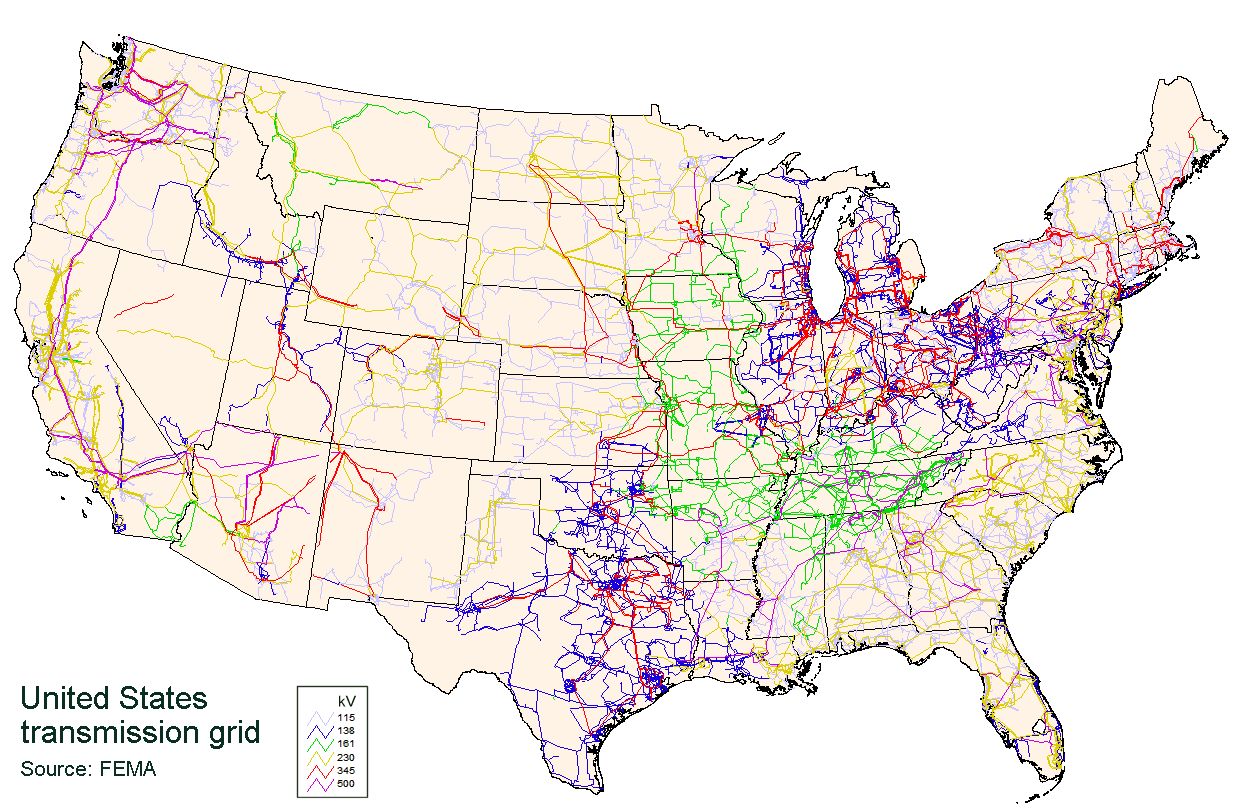|
Open Access Same-Time Information System
The Open Access Same-Time Information System (OASIS), is an Internet-based system for obtaining services related to electric power transmission in North America. It is the primary means by which high-voltage transmission lines are reserved for moving wholesale quantities of electricity. The OASIS concept was originally conceived with the Energy Policy Act of 1992, and formalized in 1996 through Federal Energy Regulatory Commission (FERC) Orders 888 and 889. Before OASIS Electric utility systems in North America developed over time as regulated monopolies, jurisdictional utilities given rights to own and operate transmission and distribution networks in a given geographical area along with the responsibility to serve all loads in that same area. At first, utility companies generally served their own system load demand by building local power generation facilities within their systems. Social, economic, and ecological influences later led to new arrangements where a utility compan ... [...More Info...] [...Related Items...] OR: [Wikipedia] [Google] [Baidu] |
Internet
The Internet (or internet) is the global system of interconnected computer networks that uses the Internet protocol suite (TCP/IP) to communicate between networks and devices. It is a '' network of networks'' that consists of private, public, academic, business, and government networks of local to global scope, linked by a broad array of electronic, wireless, and optical networking technologies. The Internet carries a vast range of information resources and services, such as the inter-linked hypertext documents and applications of the World Wide Web (WWW), electronic mail, telephony, and file sharing. The origins of the Internet date back to the development of packet switching and research commissioned by the United States Department of Defense in the 1960s to enable time-sharing of computers. The primary precursor network, the ARPANET, initially served as a backbone for interconnection of regional academic and military networks in the 1970s to enable resource shari ... [...More Info...] [...Related Items...] OR: [Wikipedia] [Google] [Baidu] |
Path Of Least Resistance
The path of least resistance is the physical or metaphorical pathway that provides the least resistance to forward motion by a given object or entity, among a set of alternative paths. The concept is often used to describe why an object or entity takes a given path. The way in which water flows is often given as an example for the idea. Description In physics, the "path of least resistance" is a heuristic from folk physics that can sometimes, in very simple situations, describe approximately what happens. It is an approximation of the tendency to the least energy state. Other examples are "what goes up must come down" (gravity) and "heat goes from hot to cold" (second law of thermodynamics). But these simple descriptions are not derived from laws of physics and in more complicated cases these heuristics will fail to give even approximately correct results. In electrical circuits, for example, the current always follows all available paths, and in some simple cases the "path of ... [...More Info...] [...Related Items...] OR: [Wikipedia] [Google] [Baidu] |
Electric Power Transmission Systems
Electric power transmission is the bulk movement of electrical energy from a generating site, such as a power plant, to an electrical substation. The interconnected lines that facilitate this movement form a ''transmission network''. This is distinct from the local wiring between high-voltage substations and customers, which is typically referred to as electric power distribution. The combined transmission and distribution network is part of electricity delivery, known as the electrical grid. Efficient long-distance transmission of electric power requires high voltages. This reduces the losses produced by strong currents. Transmission lines use either alternating current (HVAC) or direct current (HVDC). The voltage level is changed with transformers. The voltage is stepped up for transmission, then reduced for local distribution. A wide area synchronous grid, known as an "interconnection" in North America, directly connects generators delivering AC power with the same rela ... [...More Info...] [...Related Items...] OR: [Wikipedia] [Google] [Baidu] |
Regional Transmission Organization
A regional transmission organization (RTO) in the United States is an electric power transmission system operator (TSO) that coordinates, controls, and monitors a multi-state electric grid. The transfer of electricity between states is considered interstate commerce, and electric grids spanning multiple states are therefore regulated by the Federal Energy Regulatory Commission (FERC). The voluntary creation of RTOs was initiated by FERC Order No. 2000, issued on December 20, 1999. The purpose of the RTO is to promote economic efficiency, reliability, and non-discriminatory practices while reducing government oversight. An independent system operator (ISO) is similarly an organization formed at the recommendation of FERC. In the areas where an ISO is established, it coordinates, controls, and monitors the operation of the electrical power system, usually within a single US state, but sometimes encompassing multiple states. RTOs typically perform the same functions as ISOs but cove ... [...More Info...] [...Related Items...] OR: [Wikipedia] [Google] [Baidu] |
Independent System Operator
A regional transmission organization (RTO) in the United States is an electric power transmission system operator (TSO) that coordinates, controls, and monitors a multi-state electric grid. The transfer of electricity between states is considered interstate commerce, and electric grids spanning multiple states are therefore regulated by the Federal Energy Regulatory Commission (FERC). The voluntary creation of RTOs was initiated by FERC Order No. 2000, issued on December 20, 1999. The purpose of the RTO is to promote economic efficiency, reliability, and non-discriminatory practices while reducing government oversight. An independent system operator (ISO) is similarly an organization formed at the recommendation of FERC. In the areas where an ISO is established, it coordinates, controls, and monitors the operation of the electrical power system, usually within a single US state, but sometimes encompassing multiple states. RTOs typically perform the same functions as ISOs but cov ... [...More Info...] [...Related Items...] OR: [Wikipedia] [Google] [Baidu] |
ISO RTO
A regional transmission organization (RTO) in the United States is an electric power transmission system operator (TSO) that coordinates, controls, and monitors a multi-state electric grid. The transfer of electricity between states is considered interstate commerce, and electric grids spanning multiple states are therefore regulated by the Federal Energy Regulatory Commission (FERC). The voluntary creation of RTOs was initiated by FERC Order No. 2000, issued on December 20, 1999. The purpose of the RTO is to promote economic efficiency, reliability, and non-discriminatory practices while reducing government oversight. An independent system operator (ISO) is similarly an organization formed at the recommendation of FERC. In the areas where an ISO is established, it coordinates, controls, and monitors the operation of the electrical power system, usually within a single US state, but sometimes encompassing multiple states. RTOs typically perform the same functions as ISOs but cove ... [...More Info...] [...Related Items...] OR: [Wikipedia] [Google] [Baidu] |
United States Energy
The energy policy of the United States is determined by federal, state, and local entities. It addresses issues of energy production, distribution, consumption, and modes of use, such as building codes, mileage standards, and commuting policies. Energy policy may be addressed via include legislation, regulation, court decisions, public participation, and other techniques. Federal energy policy acts were passed in 1974, 1992, 2005, 2007, 2008, 2009, 2021, and 2022, although energy-related policies have appeared in many other bills. State and local energy policies typically relate to efficiency standards and/or transportation. Federal energy policies since the 1973 oil crisis have been criticized over an alleged crisis-mentality, promoting expensive quick fixes and single-shot solutions that ignore market and technology realities. Americans constitute less than 5% of the world's population, but consume 26% of the world's energy to produce 26% of the world's industrial ou ... [...More Info...] [...Related Items...] OR: [Wikipedia] [Google] [Baidu] |
NERC Tag
{{Unsourced, date=November 2021 A NERC Tag, also commonly referred to as an E-Tag, represents a transaction on the North American bulk electricity market scheduled to flow within, between or across electric utility company territories. The NERC Tag is named for the North American Electric Reliability Corporation (NERC), which is the entity that was responsible for the implementation of the first energy tagging processes. NERC Tags were first introduced in 1997, in response to the need to track the increasingly complicated energy transactions which were produced as a result of the beginning of electric deregulation in North America. Electric Deregulation in North America The Federal Energy Regulatory Commission (FERC)'s Energy Policy Act of 1992 was the first major step towards electric deregulation in North America, and was followed by a much more definitive action when FERC issued Orders 888 and 889 in 1996, which laid the groundwork for formalized deregulation of the industry ... [...More Info...] [...Related Items...] OR: [Wikipedia] [Google] [Baidu] |
North American Electric Reliability Corporation
The North American Electric Reliability Corporation (NERC) is a nonprofit corporation based in Atlanta, Georgia, and formed on March 28, 2006, as the successor to the North American Electric Reliability Council (also known as NERC). The original NERC was formed on June 1, 1968, by the electric utility industry to promote the reliability and adequacy of bulk power transmission in the electric utility systems of North America. NERC's mission states that it is to "ensure the reliability of the North American bulk power system." NERC oversees six regional reliability entities and encompasses all of the interconnected power systems of Canada and the contiguous United States, as well as a portion of the Mexican state of Baja California. NERC's major responsibilities include working with all stakeholders to develop standards for power system operation, monitoring and enforcing compliance with those standards, assessing resource adequacy, and providing educational and training resour ... [...More Info...] [...Related Items...] OR: [Wikipedia] [Google] [Baidu] |
Transmission System Operator
File:Electricity grid simple- North America.svg, 380px, Simplified diagram of AC electricity grid from generation stations to consumers rect 2 243 235 438 Power station rect 276 317 412 556 Transformer rect 412 121 781 400 Electric power transmission rect 800 0 980 165 Transformer desc bottom-left A transmission system operator (TSO) is an entity entrusted with transporting energy in the form of natural gasEuropean Network of Transmission System Operators for Gas ''''. Retrieved: 2 October 2010. or electrical power on a national or regional level, using fixed |
Independent System Operator
A regional transmission organization (RTO) in the United States is an electric power transmission system operator (TSO) that coordinates, controls, and monitors a multi-state electric grid. The transfer of electricity between states is considered interstate commerce, and electric grids spanning multiple states are therefore regulated by the Federal Energy Regulatory Commission (FERC). The voluntary creation of RTOs was initiated by FERC Order No. 2000, issued on December 20, 1999. The purpose of the RTO is to promote economic efficiency, reliability, and non-discriminatory practices while reducing government oversight. An independent system operator (ISO) is similarly an organization formed at the recommendation of FERC. In the areas where an ISO is established, it coordinates, controls, and monitors the operation of the electrical power system, usually within a single US state, but sometimes encompassing multiple states. RTOs typically perform the same functions as ISOs but cov ... [...More Info...] [...Related Items...] OR: [Wikipedia] [Google] [Baidu] |
Electric Power Transmission
Electric power transmission is the bulk movement of electrical energy from a generating site, such as a power plant, to an electrical substation. The interconnected lines that facilitate this movement form a ''transmission network''. This is distinct from the local wiring between high-voltage substations and customers, which is typically referred to as electric power distribution. The combined transmission and distribution network is part of electricity delivery, known as the electrical grid. Efficient long-distance transmission of electric power requires high voltages. This reduces the losses produced by strong currents. Transmission lines use either alternating current (HVAC) or direct current (HVDC). The voltage level is changed with transformers. The voltage is stepped up for transmission, then reduced for local distribution. A wide area synchronous grid, known as an "interconnection" in North America, directly connects generators delivering AC power with the same rela ... [...More Info...] [...Related Items...] OR: [Wikipedia] [Google] [Baidu] |




